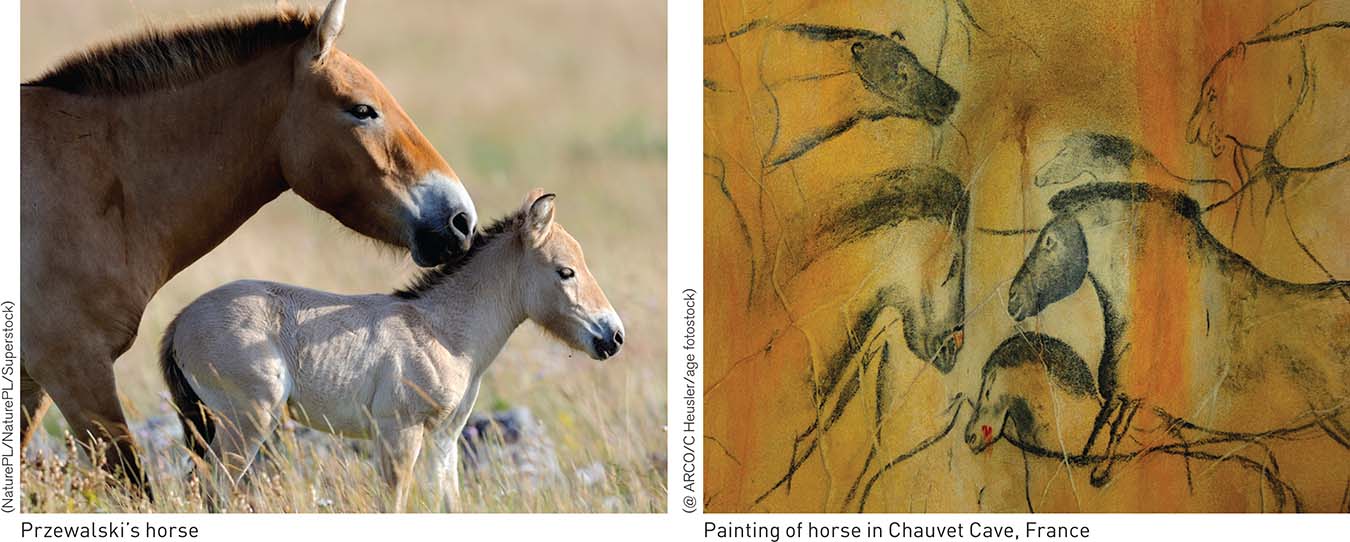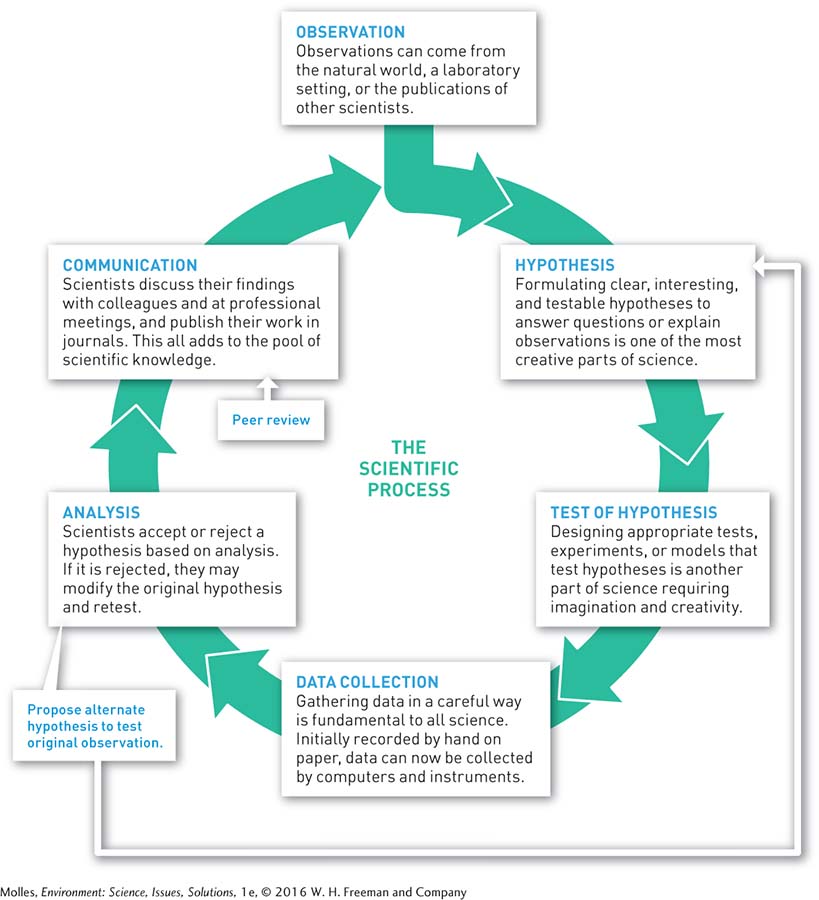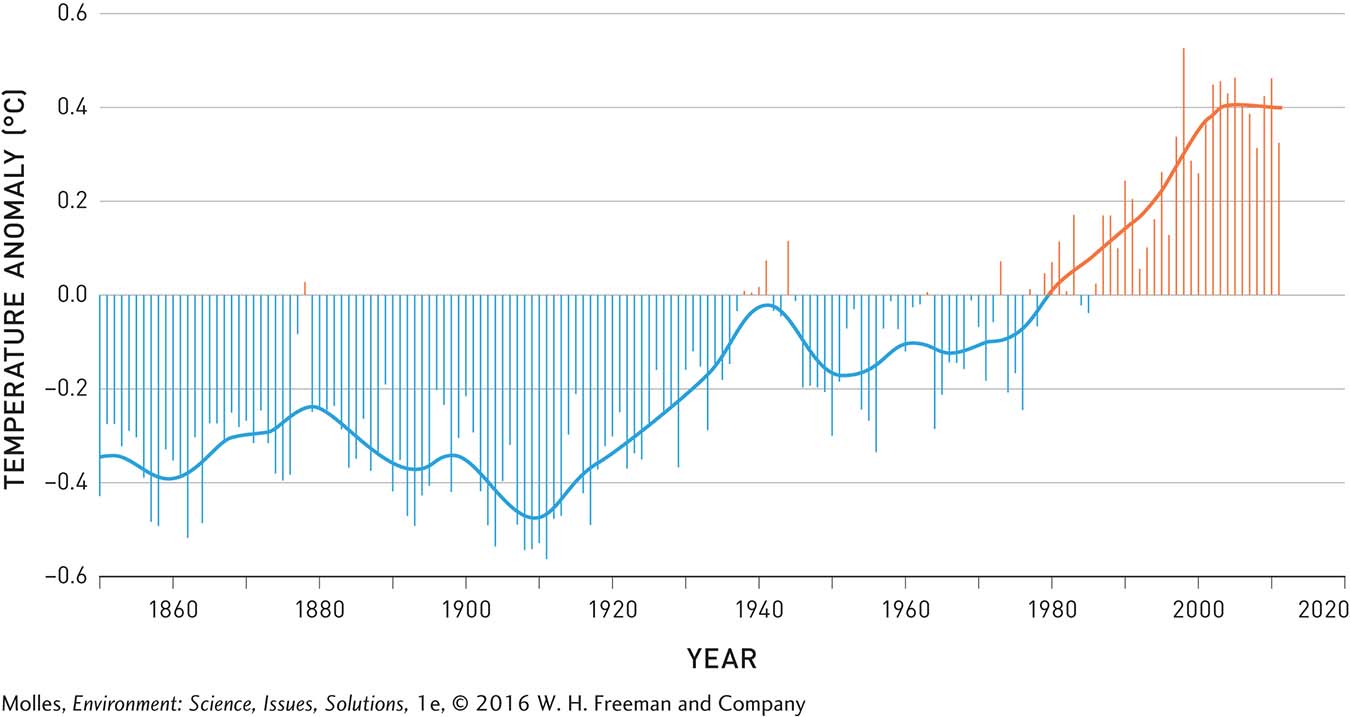1.2 Science uses a formal method to gather evidence about how nature works
science A formal process used to study nature, and the body of knowledge resulting from that process.
environmental science Study of the influence of humans on the environment and the effects of the environment on humans; also attempts to find ways of reducing human harm to the environment.
technology Practical application of scientific knowledge and methods to create products and processes.
The first step toward understanding and evaluating environmental issues is through science, a formal process of gathering evidence using observations, experiments, and models. Environmental science examines how humans have changed and are changing the environment from local to global scales. Environmental science is also a practical discipline that goes beyond academic studies to find ways of reducing human harm to the environment. Scientific knowledge is put to use through technology, such as developing alternatives to CFCs or improved methods of treating wastewater, and through new laws and regulations, which are developed based on society’s value systems. You may think about science as something outside your typical experience, but it simply formalizes what people everywhere have done throughout history: learn about the world through observation and experience.
Ancient Observations
In 1994 a group of French cave explorers discovered one of the most richly painted caves in southwestern Europe, Chauvet Cave. It featured remarkably detailed images of a wild horse with a short, brushlike mane. The horse looked strikingly similar to Przewalski’s horse, but that animal lives some 5,000 miles away on the grassy Mongolian Steppe. When scientists analyzed the pigments in the cave, they discovered that the paintings had been made some 31,000 years earlier, before wild horses had become extinct in Europe. Although fossil remains of wild horses had been found in Europe before, the cave paintings captured the horse’s pigment and fur, giving scientists further confirmation of how similar these extinct European horses were to the living Przewalski’s horse (Figure 1.4). Most important to our discussion, those paintings demonstrate clearly that careful observation, the basis of all science, was well developed among our Ice Age ancestors. Modern science has gone far beyond these ancient people, as it has developed as a formal process.

The Scientific Process
The domain of science includes anything that can be observed by the senses or by extensions of them, from subatomic particles to distant galaxies (Figure 1.5). Modern instruments such as chemical sensors, microscopes, and telescopes give scientists access to information about nature that was inaccessible to earlier humans. For example, the invention of an ozone detector by Gordon Dobson in 1924, now called the Dobsonmeter, allowed the British Antarctic Survey team to measure the ozone hole over Antarctica in 1984. However, the process of science is basically the same whether it involves technically sophisticated instruments or not. The core of science consists of gathering evidence using observations, experiments, and models to test hypotheses (Figure 1.6).


Hypothesis
hypothesis An explanation of an observation, or a set of relationships, based on a limited amount of information; hypotheses are used to guide scientific experiments, observation, and modeling.
A hypothesis is an explanation of an observation, or a set of relationships, based on a limited amount of information. Once a scientist or team of scientists decides on a question to study, they will propose a hypothesis or a number of alternative hypotheses as tentative answers to the question. For example, a scientist observing the resemblance of Przewalski’s horse and the paintings of ancient horses in Chauvet Cave might ask, “Are living Przewalski’s horses closely related genetically to the horses roaming western Eurasia during the time that the Chauvet paintings were made”? Once scientists have proposed a hypothesis, they devise procedures to test it. The methods appropriate for a particular scientific investigation—
Observation
observation Qualitative or quantitative information gathered systematically from the natural world.
As you have seen, one of the most basic sources of information about the material world is observation. Observation is either qualitative or quantitative information gathered systematically from the natural world. Making and recording observations can be used to test many hypotheses; in fact, observations often precede and lead to hypotheses. Modern observations, once recorded in paper notebooks, are now recorded in digital format by computers or other instruments. Familiar examples of routine observations include the temperature records made at weather stations. Daily temperatures have been recorded at some weather stations for more than a century and a half (Figure 1.7). Though these long-

Experiments
Experiments are studies in which one or more physical, chemical, or biological factors are controlled and other factors are allowed to vary among study systems. There are two major types of experiments important to environmental science: laboratory experiments and field experiments.
laboratory experiments Experiments in which scientists attempt to control, or keep constant, all factors that may influence their study system, while they vary the factor of interest and observe the effect of the variation on the study system.
In laboratory experiments, scientists attempt to control, or keep constant, all factors that may influence their study system, while they vary the factor of interest and observe its effect. For instance, an environmental scientist studying the accumulation of a pesticide in a population of fish may start with the hypothesis that the rate at which fish absorb the pesticide increases with water temperature. A laboratory experiment designed to test the influence of temperature on uptake of the pesticide would establish test populations of fish in the laboratory, all living in water from the same source containing the same concentration of the pesticide, equal concentrations of oxygen, the same rates of water circulation, the same number of hours of darkness and light of the same intensity, and so forth. The one factor that the laboratory scientist would vary across study populations would be temperature.

What are some other questions and hypotheses related to how increased atmospheric CO2 might affect forests?
field experiments Experiments in which the experimenter generally controls or manipulates a single factor, the factor of interest, while allowing all other factors to vary normally.
In field experiments, there is much less control over the environment than in laboratory experiments. As a consequence, the experimenter generally manipulates a single factor, the factor of interest, while allowing all other factors to vary normally. For instance, scientists at Duke University were interested in how the increasing atmospheric concentration of carbon dioxide, CO2, might affect temperate forests. Because they could not take several large tracts of intact forest into a laboratory, they designed a field experiment: They brought in large tanks of CO2 and continuously released the gas in their experimental plots, increasing its concentration in the air. All other factors, such as temperature, precipitation, wind speed, and wind direction, were outside the control of the experimenters and varied normally.
control group A baseline for comparisons.
The experimental sites were compared to similar sites in which CO2 was not elevated. These sites served as a control group, providing a baseline for comparisons. One of the questions the Duke study was designed to answer was: Will increased atmospheric CO2 concentrations increase tree growth? The hypothesis associated with this question was, “Tree growth will be higher on plots with elevated CO2” (Figure 1.8). Another research question was: Will increased atmospheric CO2 concentrations increase the amount of carbon stored in forest soils?

Over the 10 years of the Duke field experiment, the researchers answered some of their questions. They found that the production of organic matter—
Models
models In science, simplified representations of a system, constructed on a scale more convenient for study than the actual system of interest.
Models are simplified representations of reality that scientists use to better understand or explain a natural phenomenon. For instance, a map of your hometown is a simplified representation of the street system, scaled down in size. Conversely, one might build a scaled-
stratosphere The layer of Earth’s atmosphere beginning at an elevation of 10 kilometers and extending outward to 50 kilometers (6.2 to 31.1 miles) above sea level.
A decade before the discovery of the ozone hole over the Antarctic, the chemists Mario Molina and Sherwood Rowland developed a model predicting that the release of CFCs into the atmosphere would lead to the breakdown of ozone in the stratosphere, a layer of Earth’s atmosphere extending from 10 to 50 kilometers (6.2 to 31.1 miles) above sea level. Their model proposed that chlorine released from CFCs would strip an oxygen atom from ozone, producing oxygen and forming chlorine monoxide in the process (Figure 1.9). Chlorine monoxide would then break down, free chlorine atoms would go on to convert more ozone into oxygen, and the process would run again. A decade later, theoretical and observational studies by Susan Solomon showed that the key chemical reactions involved in ozone depletion occur on the surface of stratospheric clouds. Molina and Roland cautioned that if the production of CFCs were not reduced, Earth’s ozone shield could be lost. While models do not perfectly match the actual system, information gathered from them can yield important insights.

Think About It
How are the observations of the artists of Chauvet Cave and those of modern scientists similar? How are they different?
Why are hypotheses critical to the improvement of scientific understanding of nature? (Hint: Imagine observations and experiments in the absence of hypotheses.)
What are some natural phenomena that would be best studied by laboratory experiments, by field experiments, or by models? What phenomena might be realistically studied using all three approaches?